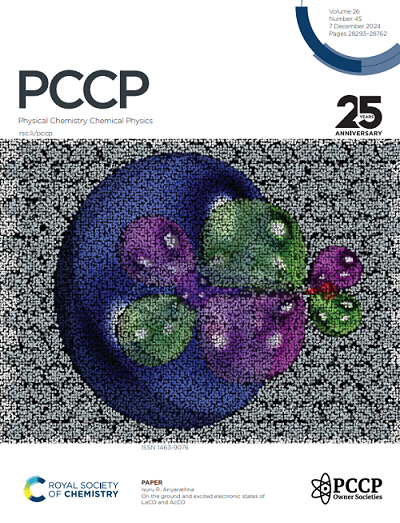The Dimerization Effects on Electronic Properties of OLED Candidate Materials for Optimized Performance: A Quantum DFT Study
IF 2.9
3区 化学
Q3 CHEMISTRY, PHYSICAL
引用次数: 0
Abstract
In recent years, there has been a growing interest in organic light-emitting diode (OLED) materials, highlighting the importance of a thorough understanding of the key factors that influence their electronic and non-linear optical (NLO) properties. To achieve this objective, we considered five candidate OLED compounds: Dibenzothio-phen-sulfone-3-yl-9-phenyl-9H-carbazole (DBTS-CzP), 9H-thioxanthene-9-one-dibenzothiophene-sulfone (TXO-DBTS), spiro[fluorene-9,9-thioxanthene]-10,10-dioxide (SpDBTS), 9-[4-(Diphenylphosphoryl)-2,2-dimethyl-4-biphenylyl]-9H-carbazole (mCBPPO), and N,N-Bis[2-(pyridin-2-yl)phenyl]-N,N-di(n-butyl)phenylamine (DPA-2Py). We employed density functional theory (DFT) and time-dependent DFT (TD-DFT) methods to investigate how dimerization can affect their electronic and NLO characteristics. The results of electronic structure analyses, including HOMO-LUMO gaps and NLO characteristics, reveal that dimerization enhances dipole moments and polarizabilities, facilitating improved charge transfer and electronic transitions. Among the studied compounds, TXO-DBTS demonstrates stable electronic properties and exhibits enhanced NLO characteristics post-dimerization --such as efficient charge mobility and superior color purity-- positioning it as a promising candidate for advanced OLED applications. These findings underscore dimerized structures' potential to enhance optoelectronic device performance.求助全文
约1分钟内获得全文
求助全文
来源期刊

Physical Chemistry Chemical Physics
化学-物理:原子、分子和化学物理
CiteScore
5.50
自引率
9.10%
发文量
2675
审稿时长
2.0 months
期刊介绍:
Physical Chemistry Chemical Physics (PCCP) is an international journal co-owned by 19 physical chemistry and physics societies from around the world. This journal publishes original, cutting-edge research in physical chemistry, chemical physics and biophysical chemistry. To be suitable for publication in PCCP, articles must include significant innovation and/or insight into physical chemistry; this is the most important criterion that reviewers and Editors will judge against when evaluating submissions.
The journal has a broad scope and welcomes contributions spanning experiment, theory, computation and data science. Topical coverage includes spectroscopy, dynamics, kinetics, statistical mechanics, thermodynamics, electrochemistry, catalysis, surface science, quantum mechanics, quantum computing and machine learning. Interdisciplinary research areas such as polymers and soft matter, materials, nanoscience, energy, surfaces/interfaces, and biophysical chemistry are welcomed if they demonstrate significant innovation and/or insight into physical chemistry. Joined experimental/theoretical studies are particularly appreciated when complementary and based on up-to-date approaches.
 求助内容:
求助内容: 应助结果提醒方式:
应助结果提醒方式:


